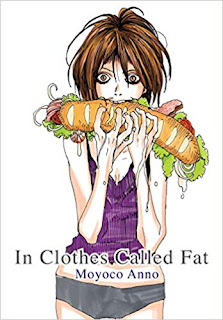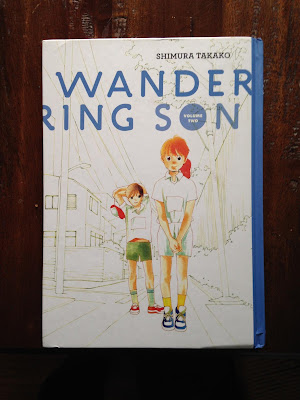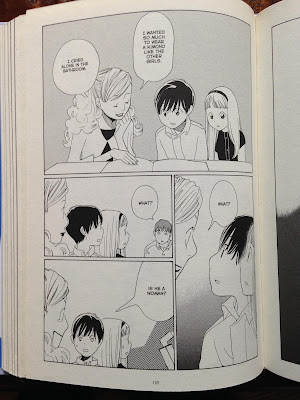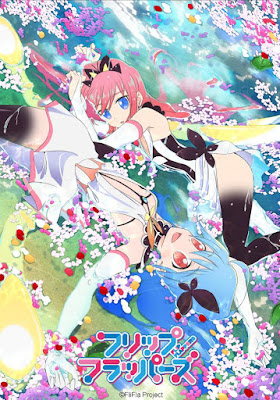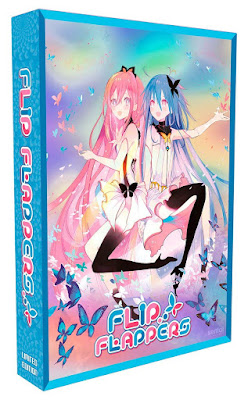It's the story of four high-school girls who are all manga artists, ranging from the just-debuted to the serialized, and who find themselves living together in a dorm specifically designed to support aspiring manga artists. The show itself is, I think, supposed to be a cute girls doing cute things cutely show - ie slice of life. Comparables would be something like Minami-ke, K-on, New Game, and A Place Further Than the Universe (all of which are far superior).
Unfortunately, the show is just not well done. The writing is bland, with very little humor. The characters are mostly bland (other than the gender non-conforming Tsubasa) or annoying like the "lead" heroine Kaos who is not a very good mangaka and spends all her time crying, whining, or stressing about not being very good. Not exactly endearing.
The art is pretty terrible. The color scheme is all over the place, visually distracting. The character designs range from bland to annoying, with every hair color imaginable (not necessarily a problem in and of itself, but definitely a problem given the overall too-much-ness of the use of color in the backgrounds). There were also some definitely sloppy moments in the art. One was so egregious, I had to create this series of screen-shots to demonstrate. Basically, the characters in the background of the scene are not proportionately foreshortened and therefore look too tiny. It's subtle at first but follow me:
 |
| Here's the original scene. Koyume and Kaos (seated on the floor) just look too tiny to me, particularly Koyume on the left (Kaos is supposed to be tiny compared to the others) |
 |
| In this one, I've increased the size of Koyume so that her head and bottom match Ruki's vanishing lines from her head and bottom. It's subtle, but... |
 |
| Her's what happens when we place the new, larger Koyume back on the ground. Compare to the first picture. Looks better doesn't it? There are things like this throughout the whole series. |
Okay, so we don't have much about the industry as a selling point. What about the characters? There are four main characters. Our lead is Kaos. She's tiny, she is drawn (and unfortunately acts) much younger than a high-school freshmen. She's not really talented, cries about it all the time, is voiced like an annoying little kid, and simply isn't endearing. We don't really want to fight for her. We do get some sense that she's either attracted to girls or simply turned on by girl-on-girl action, hard to know. But it's not developed or used as anything other than for an occasional side comment. We get no backstory and no character development to speak of. She whines and cries up through the final moments of the last episode.
Her roommate is Koyume. At first she can't draw guys. Eventually she finds herself attracted to Tsubasa, another mangaka in the house, and even though Tsubasa is a girl, Koyume now has someone to base her male characters on (problem solved). Nice to see a little bit of hinted-at yuri done casually. Through much of the show, I was proud that the writers and animators depicted Koyume as slightly not-thin, a bit curvy. She was always depicted eating, but never shy about her body, and in fact her curves were complimented by the other girls. When posing for one of Ruki's manga, we even see her belly hanging a bit over her underwear line, you know, like a real gosh-darn person! So nice to see other body types represented and praised in anime! BUT, they ruined it in one episode where for some reason the writers decide that she's going to struggle fitting into clothes, she imagines herself fat and unable to draw because of it, and then goes on all sorts of diets and exercise, loses weight, which kills her mood, and she goes back to drawing once she goes back to eating. It was a weird episode of mixed messages that undid the good that was previously done. In addition, Koyume doesn't really have a personality other than being hungry, sort of in love with Tsubasa, and really kind and friendly. Boring; and we learn nothing about her throughout the show.
Ruki appears to be the put-together, sensible one. However, it turns out she's accidentally good at drawing really "pervy" (as they describe it) manga. So even though she's clean cut, she's pretty much always drawing sex scenes. This leads to some nice embarrassments and a few jokes. She has some potential as a character. But ultimately, we don't learn anything about her either. That's it. She's nice, smart, kind, thoughtful, draws sexy manga. The end.
Then, we get to Tsubasa. The only interesting character in the whole thing. Wonderfully voice acted, Tsubasa is a girl who draws Shounen manga, cosplays, likes to see herself as the strong hero, has a princely vibe with the other girls (we totally get why Koyume swoons over her) and has a somewhat funny backstory of coming from a rich family where she has to pretend she still has long hair and wear dresses even though normally she wears neutral or boy-ish clothing and has short hair. She's kind and sweet but in a take-charge, protector sort of way, she's quite frequently the glue to scenes or whole episodes and is by far the strongest written character in the show. She ultimately seems to be the only one with any sense about her. I wish we had more of her.
Basically, it's a pretty middling show. Not awful, not hard to watch, just not much to speak of either. So to conclude this review, I've tried to catalog every funny line in the entire 12 episode series. I've decided not to give you the background on each line, so enjoy them for what they're worth. Sadly, there were many episodes without a single funny line. But maybe, if you find these inherently funny, you'll want to watch the show despite my critique.
"Flowers are blooming in the battle scene."
"The protagonists of my manga get stung by bugs a lot."
"I want to be scolded by the beautiful teacher too."
"You're so nervous. You must've been through some really scary things. You're such a failure!"
"Oh so it's a computer chair."
"Then I have nothing to worry about...except everything!"
"...or the day my doggy died back home, I kept drawing pervy manga, even though I was crying."
"I don't want to ever forget this view from today. The blue sky, the white clouds, and... Rukki's sketchbook being washed away by the waves."
"I also got a sudden request for an illustration, or not. But my manuscript...actually doesn't have a date...My cold...is actually all better now...My leg...Yes, my leg hurts..."
"Not to mention, Senpai isn't a ghost to begin with, so that's just rude!"
"The flawless teacher has a thing for kneecaps."
"Manga artists pretty much make a living doing something shameful. We're all a disgrace!"
"Is this a pen?"
"Is the perviest thing you can think of a panty shot, Kaos-sensei?"
"Are you still asleep? This isn't so bad..."
So there you have it. These lines did bring a smile back as I thought about the context of each, it's just unfortunate than in a 12 episode comedy/slice-of-life series, these are the ONLY funny moments. Mix that with mediocre art, no character development, and nothing else of interest, and it's just sort of boring. Comic Girls: 5/10
✩🚺



